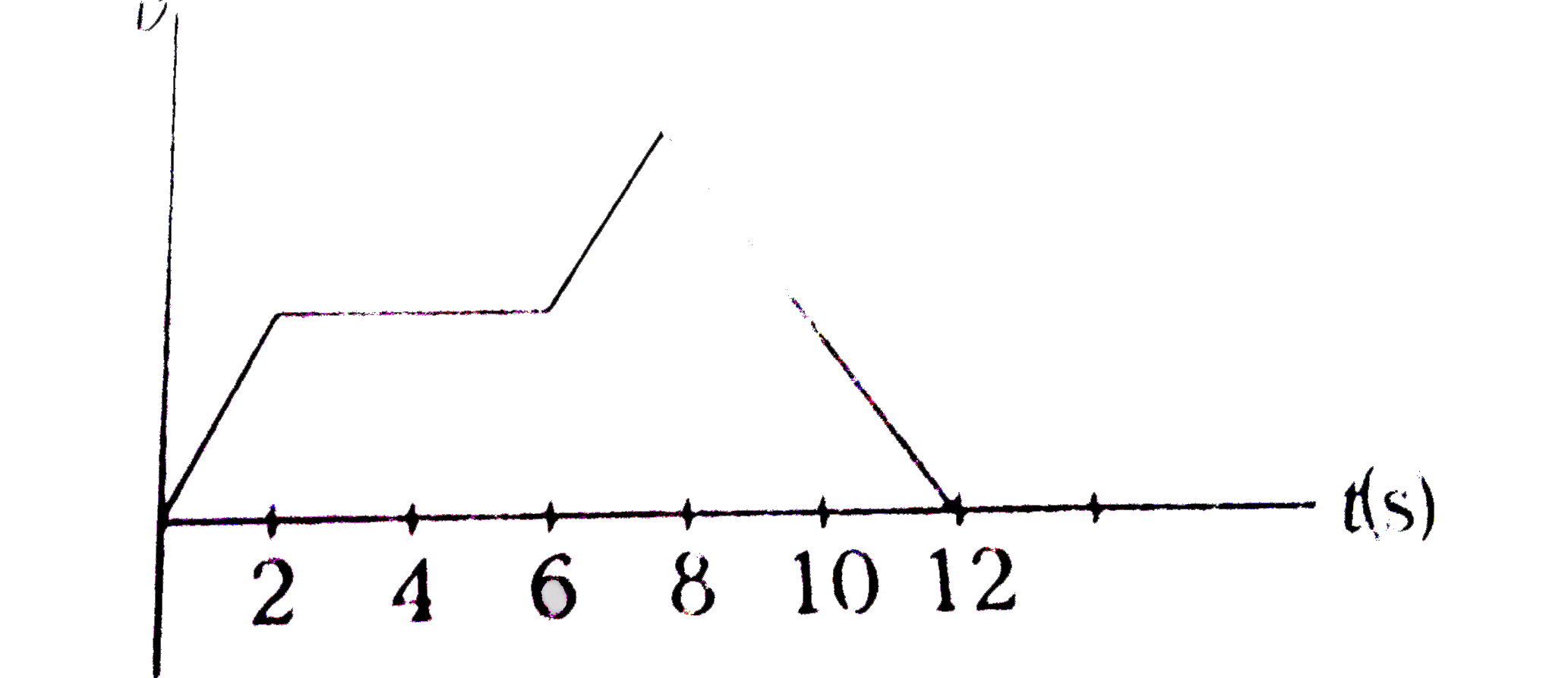A body of mass m travels in a straight line with a velocity v=kx3/2 where k is a constant. The work done in displacing the body from x=0 to x is proportional to:
x1/2
x2
x3
x5/2
The correct Answer is:C
To solve the problem, we need to determine how the work done in displacing a body from x=0 to x is related to x. The velocity of the body is given as v=kx3/2.
Step 1: Understand the relationship between work done and kinetic energy
The work-energy theorem states that the work done on an object is equal to the change in its kinetic energy. Therefore, we can write:
W=ΔKE=KEf−KEi
Where KEf is the final kinetic energy and KEi is the initial kinetic energy.
Step 2: Calculate the initial and final kinetic energy
At x=0:
- The initial velocity vi=k(0)3/2=0
- Thus, the initial kinetic energy KEi=12mv2i=12m(0)2=0
At a position x:
- The final velocity vf=kx3/2
- Therefore, the final kinetic energy KEf=12mv2f=12m(kx3/2)2
Step 3: Substitute the expression for final kinetic energy
Substituting vf into the expression for KEf:
KEf=12m(kx3/2)2=12mk2x3
Step 4: Calculate the work done
Now, substituting the values of KEf and KEi into the work-energy equation:
W=KEf−KEi=12mk2x3−0=12mk2x3
Step 5: Determine the proportionality
From the expression for work done W=12mk2x3, we can see that the work done W is proportional to x3.
Conclusion
Thus, the work done in displacing the body from x=0 to x is proportional to x3.
Answer: W∝x3
The work-energy theorem states that the work done on an object is equal to the change in its kinetic energy. Therefore, we can write:
At x=0:
- The initial velocity vi=k(0)3/2=0
- Thus, the initial kinetic energy KEi=12mv2i=12m(0)2=0
- The final velocity vf=kx3/2
- Therefore, the final kinetic energy KEf=12mv2f=12m(kx3/2)2
Substituting vf into the expression for KEf:
Now, substituting the values of KEf and KEi into the work-energy equation:
From the expression for work done W=12mk2x3, we can see that the work done W is proportional to x3.
Thus, the work done in displacing the body from x=0 to x is proportional to x3.
Topper's Solved these Questions
- JEE MAIN REVISION TEST - 18BOOK - VMC MODULES ENGLISHCHAPTER - JEE MAIN REVISION TEST - 18EXERCISE - PHYSICS - SECTION 2
5 Videos
- JEE MAIN REVISION TEST - 13BOOK - VMC MODULES ENGLISHCHAPTER - JEE MAIN REVISION TEST - 13EXERCISE - PHYSICS (SECTION 2)
5 Videos
- JEE MAIN REVISION TEST - 19BOOK - VMC MODULES ENGLISHCHAPTER - JEE MAIN REVISION TEST - 19EXERCISE - PHYSICS
25 Videos
Similar Questions
A body of mass 0.5kg travels in a straight line with velocity v=ax3/2 where a=5m/s2. The work done by the net force during its displacement from x=0 to x=2m is
View SolutionA particle of mass 2kg travels along a straight line with velocity v=a√x, where a is a constant. The work done by net force during the displacement of particle from x=0 to x=4m is
View Solution
Knowledge Check
A body of mass 0.5 kg travels in a straight line with velocity v=kx3/2 where k=5m−1/2s−1. The work done by the net force during its displacement from x=0 to x=2 m is
A1.5 JB50 JC10 JD100 J
A particle of mass 0.5kg travels in a straight line with velocity v=ax3/2 where a=5m−1/2s−1. What is the work done by the net force during its displacement from x=0 to x=2m?
View SolutionA particle of mass 0.5kg travels in a straight line with velocity v=ax3/2 where a=5m−1/2s−1. What is the work done by the net force during its displacement from x=0 to x=2m?
View SolutionA particle of mass 0.5kg travels in a straight line with velocity v=ax3/2 where a=5m−1/2s−1. What is the work done by the net force during its displacement from x=0 to x=2m?
View SolutionA particle moves in a straight line with acceleration proportional to x2, ( Where x is displacement). The gain of kinetic energy for any displacement is proportional to
View SolutionA particle located at position x=0, at time t=0, starts moving along the positive x-direction with a velocity v2=αx (where alpha is a positive constant). The displacement of particle is proportional to
View SolutionAssertion : A body is moving along a straight line such the its velocity varies with a time as shown in figure. Magnmitude of displacement of the body from t = 0 to t = 12 s is the same as the distance travelled by it in the given time duration.

Reason : For unidirectional motion of a body,
|displacement|=distance
View SolutionA body of mass m = 4 kg starts moving with velocity v0 in a straight line is such a way that on the body work is being done at the rate which is proportional to the square of velocity as given by P=βv2 where β=0.6932. Find the time elapsed in seconds before velocity of body is doubled.
View Solution
